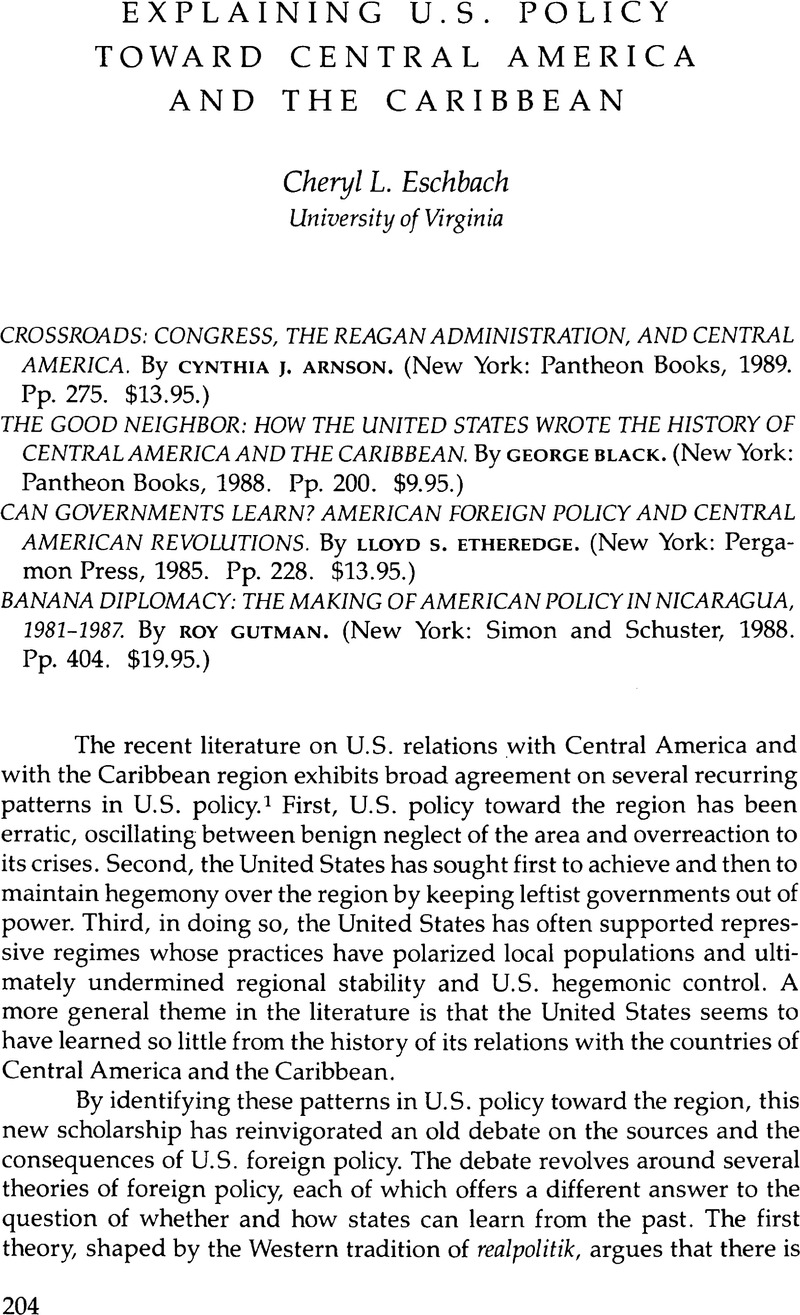Published online by Cambridge University Press: 12 October 2022

1. See especially Confronting Revolution: Security through Diplomacy in Central America, edited by Morris J. Blachman, William M. LeoGrande, and Kenneth E. Sharpe (New York: Pantheon Books, 1986); Walter LaFeber, Inevitable Revolutions: The United States in Central America (New York: W. W. Norton, 1984); Robert A. Pastor, Condemned to Repetition: The United States and Nicaragua (Princeton, N.J.: Princeton University Press, 1987); and Lars Schoultz, National Security and United States Policy toward Latin America (Princeton, N.J.: Princeton University Press, 1987).
2. The classic statement of this perspective is Hans J. Morgenthau, Politics among Nations, 5th ed. (New York: Knopf, 1973).
3. See in particular the studies of U.S. and British foreign policies during the interwar years by E. H. Carr, The Twenty Years' Crisis, 1919-1939 (New York: Harper & Row, 1964); and of the foreign policies of Third World states by Stephen D. Krasner, Structural Conflict: The Third World against Global Liberalism (Berkeley and Los Angeles: University of California Press, 1985).
4. Declining hegemonic powers, however, generally cannot afford not to learn from their interaction with other countries. For key studies of this theme, see Robert Gilpin, War and Change in World Politics (Cambridge: Cambridge University Press, 1981); and Paul Kennedy, The Rise and Fall of the Great Powers (New York: Random House, 1987).
5. Gordon Connell-Smith, The United States and Latin America (New York: John Wiley and Sons, 1974).
6. The 20 percent estimate of success was made by Allen Dulles, Director of the CIA under Eisenhower. See Stephen Schlesinger and Stephen Kinzer, Bitter Fruit (New York: Anchor, 1983), 177
7. James Lee Ray, “U.S.-Central American Relations: Dilemmas, Prophets, and Solutions,” LAR 21, no. 1 (1986):227-43.
8. These motifs are similar to the ways in which most communities have typically related to outsiders. For one theoretical explanation of these patterns, see Manfred Halpern, “Choosing between Ways of Life and Death and between Forms of Democracy: An Archetypal Analysis,” Alternatives 12 (1987):35.